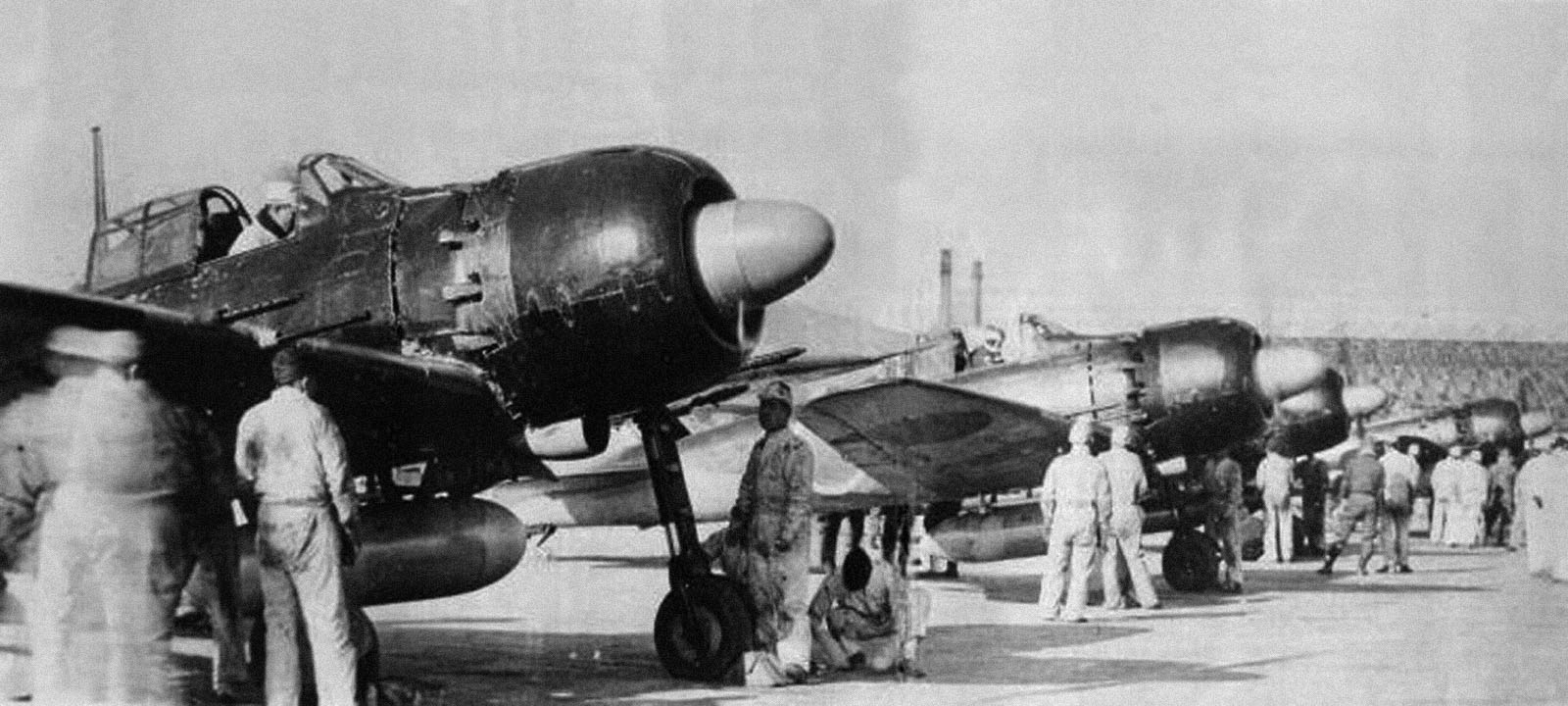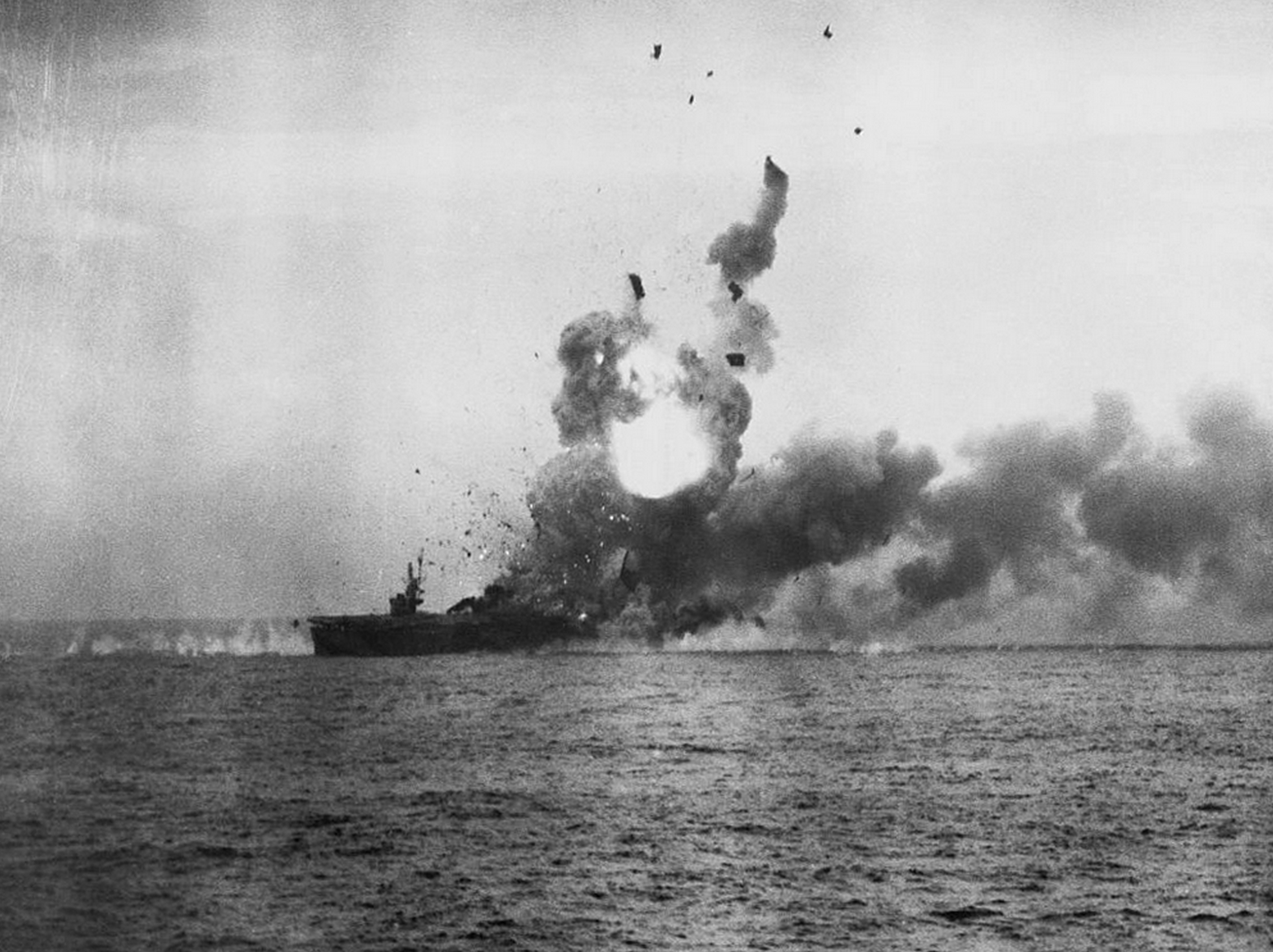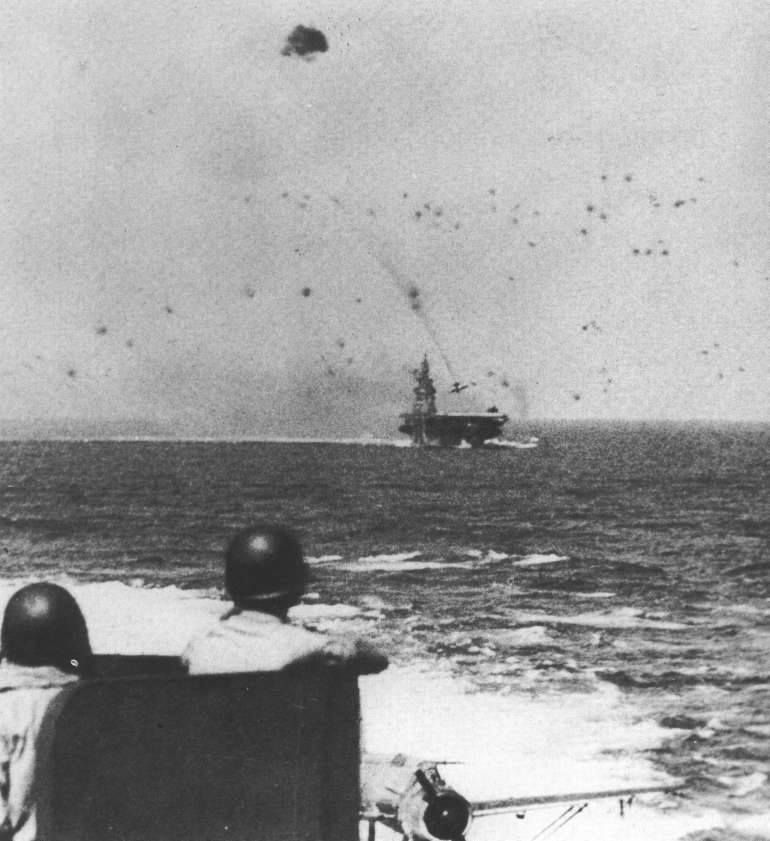The First Kamikaze Attack: The Birth of Japan's Ideology of Sacrifice

On October 25, it marked 80 years since the first sinking of a combat ship by Japanese kamikaze pilots. This took place in 1944, during the Battle of Leyte Gulf in the central Philippine archipelago. At 10:51, a Mitsubishi A6M2 Zero fighter, possibly piloted by Yukio Seki, crashed into the American escort carrier St. Lo, weighing nearly 11,000 tons. Under the Zero's wing was a 250-kg bomb that detached, penetrated the flight deck, and exploded on the hangar deck, where aircraft were being refueled and rearmed. Gasoline ignited, ammunition exploded, and the stockpile of torpedoes and bombs in the ship's magazines detonated, causing the St. Lo to sink within 30 minutes. More than 140 people died immediately or succumbed to their wounds. Japanese kamikaze pilots damaged six other carriers during that attack, sacrificing 17 lives to achieve this success.
The term "kamikaze" refers to the "divine wind" which, according to Shinto tradition, brought blessings or signs of good fortune. It’s believed that in the 13th century, such a typhoon twice shattered the Mongol fleet near Japan, sparing the nation from invasion. This event became a powerful national myth and the ideological foundation for the creation of kamikaze units. Japan’s military command took this desperate step as the Allies, particularly the U.S. Navy, gained overwhelming dominance in the Pacific Theater of World War II in 1944.
Admirals Takijiro Ohnishi and Masafumi Arima are considered pioneers of the kamikaze tactic. The number of volunteers willing to sacrifice their lives for their country far exceeded the available aircraft. This willingness was driven by Japanese mentality, the samurai code of Bushido, and intense propaganda that built a cult around kamikaze heroes.
The formation of the first kamikaze units was completed on October 20, 1944. Their first attack took place the following day, targeting the Australian heavy cruiser HMAS Australia. The pilot’s name and the type of his aircraft remain unknown. This brave pilot crashed into the superstructure of the cruiser; although his bomb didn’t explode, shrapnel and fires from spilled aviation fuel killed at least 30 people. The cruiser remained in service and later survived five more kamikaze hits.
By the end of World War II, Japan had prepared nearly 4,000 kamikaze pilots. They used various types of aircraft, mostly outdated fighters. Additionally, Yokosuka developed the MXY7 Ohka rocket-powered bomb, essentially a human-guided missile. However, its effectiveness fell far short of expectations.
According to Japanese sources, kamikaze attacks sank 81 enemy ships and damaged 195 others. American data, however, reports 34 ships sunk and 288 damaged. The psychological impact was significant, as kamikaze attacks instilled fear among enemy sailors. Despite the damage inflicted, kamikaze pilots were unable to alter the course of the war in Japan's favor.

 Fan-page
Fan-page Youtube
Youtube TikTok
TikTok Aviamuseum
Aviamuseum State Aviation Museum
State Aviation Museum

_1729837838_1.jpg)

_1729837896_1.jpg)
